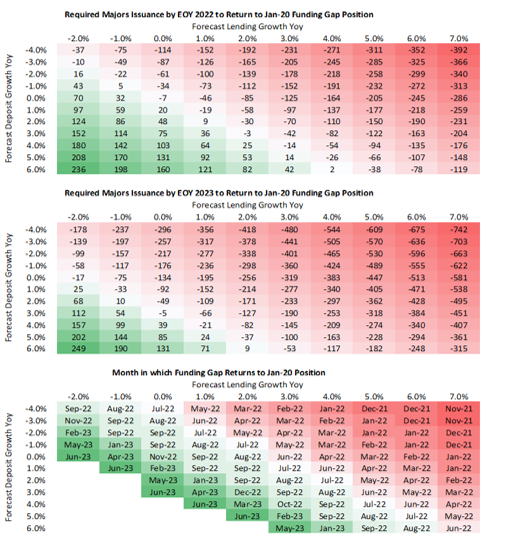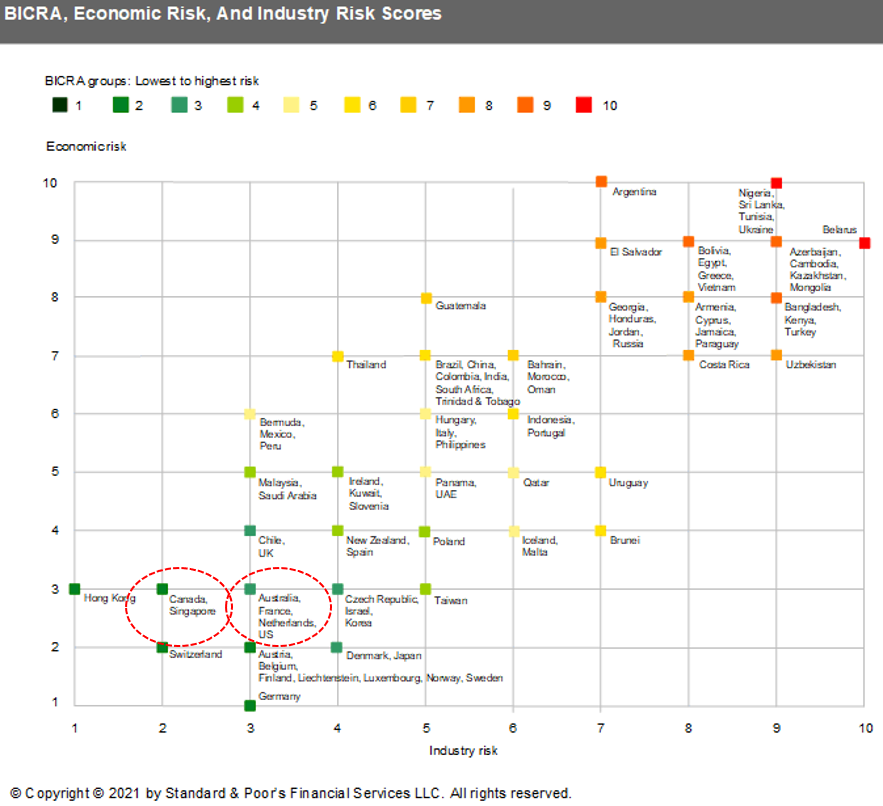Positioning for the looming bond supply shock
One significant event risk that we have been actively positioning for is a tsunami of senior bond issuance from Australia’s banks as they seek to gradually repay the $180 billion they will have eventually borrowed under the Reserve Bank of Australia’s three-year term funding facility (TFF).
In contrast to the consensus, we forecast that this wave of supply would start hitting before June 30 when the TFF expires. In March I asked two major bank treasurers at The Australian Financial Review Banking Summit what their expectations were for senior bank bond issuance, and both guided towards the second half of the year.
The day I posed this question, ANZ broke the drought with a one-year senior deal in Aussie dollars, which was followed by a five-year issue by Macquarie Group in the UK. And this week we had Bank of Queensland launch the first five-year senior bank issue in Aussie dollars in a very long time. (Banks have not needed to borrow from debt markets, given they had so much cheap funding available via the TFF.)
Earlier this year our analysts built detailed financial models that allowed us to forecast the quantum of senior bank bond issuance that will be required as a function of two crucial variables: balance-sheet growth and changes in deposit funding.
The enormous surge in deposits that flooded into the banking system in 2020 reduced the need for banks to issue wholesale bonds. Assuming, however, that this starts to slow down while balance sheets expand more rapidly on the back of the housing boom and a recovery in business lending, it is easy to arrive at the conclusion that the major banks alone will have to issue more than $150 billion of senior debt over the next few years.

This supply shock should result in the cost of five-year debt normalising from its historically low level around 45 basis points, which has not been seen since 2007, back to the 70 basis point area that represented the low-watermark for these spreads in the post-crisis period.
There are complex nuances that influence this analysis. First, the banks will not likely issue much, if any, three-year paper because they need to extend their liabilities beyond the three-year repayment date of the TFF to avoid concentrated refinancing cliffs. This is why we are predicting longer tenor issuance with a focus on five-year deals in Australia and 10-year deals in US dollars and euros.
Second, the banks will have to shift more of their funding offshore given they will be restricted from being the biggest buyers of their own bonds in Aussie dollars as the Australian Prudential Regulation Authority winds-back the committed liquidity facility (CLF).
When Australia had few government bonds on issue, the RBA and APRA created the CLF as a substitute. But with massive coronavirus-induced issuance, now underscored by the federal government’s military procurement needs, there is no real need for the CLF.
This eliminates what has historically been the single-biggest buyer base for senior-ranking Aussie bank bonds: the banks themselves.
Possible Rating Upgrades for Tier 2 and Hybrids
A related development over the week was Standard & Poor’s banking analysts making a raft of changes to their credit rating assessments. S&P has upgraded the “negative” economic risk trend for Australia to “stable” (as we had suggested) while also upgrading the banking sector’s industry risk score from “stable” to “positive”, which was a welcome surprise.
S&P advises that there is now a one-in-three possibility that it will lift Australia’s Banking Industry Country Risk Assessment (BICRA) score to put our financial system alongside Canada, Singapore and Switzerland in safety terms. Bizarrely, S&P reckons that a now non-democratic Hong Kong is the safest banking jurisdiction in the world, which is exhibit A in farcical rating agency decisions.
If S&P does belatedly decide to normalise Australia’s BICRA score to being equal with Singapore and Canada, it would trigger a chain reaction in ratings. The major banks’ Tier 2 bonds would jump from BBB+ to A-. Their hybrids would likewise lift a notch from BBB- to BBB. While the major banks’ senior bond ratings would not change, all regional banks would benefit from rating upgrades to their senior, subordinated and hybrid ratings.

A final word on last week’s inflation data. It was obviously very weak, shocking the market, and underscored how much heavy lifting the RBA has to do to get employment and wages growth running at a level that can sustain consumer price inflation within its target band. It was therefore unsurprising to see Toronto-Dominion Bank raise its forecast for the RBA’s third round of quantitative easing from $50 billion to $100 billion, joining Westpac and ourselves, among others.
If any of the above analysis is news, you should consider getting superior advice.
Access Coolabah's intellectual edge
With the biggest team in investment-grade Australian fixed-income, Coolabah Capital Investments publishes unique insights and research on markets and macroeconomics from around the world overlaid leveraging its 13 analysts and 5 portfolio managers. Click the ‘CONTACT’ button below to get in touch
2 topics

